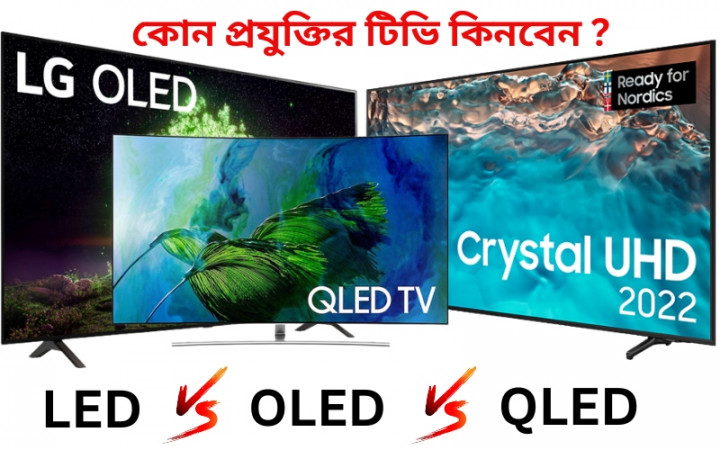
TV is the most popular entertainment device in our country which is often seen in homes, offices or public places. With the development of technology around the world, the price of television in Bangladesh has come down a lot. Among the new generation TVs nowadays, LED, QLED and OLED TVs have revolutionized the way consumers watch TV. Also, consumers in our country are upgrading their old CRT TVs to enjoy the latest technology TVs. So let's take a look at the technical differences between LED, QLED and OLED TVs and decide which one is right for you:
LED TV
LED TV is the most used TV in our country. This type of TV basically uses an array of small light emitting diodes for display technology to produce images. Besides, LED TV are available in a wide range of sizes and resolutions, so they can be used in homes, offices or public places such as hotels, hospitals, restaurants. LED TVs have a long life span of up to 60,000 hours of continuous use. LED TVs use LCD panels to increase the brightness and control the color of the image display. It also uses LED backlight to illuminate the screen. Moreover, LED TVs are very popular among consumers because they are efficient, powerful and affordable.
QLED TV
QLED TV is a new technology and somewhat expensive TV in our country. This type of LED TV basically uses quantum dots to increase the color and brightness of the display. Quantum dots are backlit by an electric current. Therefore, viewing QLED TVs will result in high levels of accurate color and brightness. Moreover, the ideal TV for watching sports or action movies is QLED TV. The refresh rate of QLED TV usually ranges from 60 Hz to 120 Hz. However, high-end models of QLD TV have a refresh rate of 240 Hz or higher, which provides smoother motion and reduces motion blur. QLED TV are long-lasting like other LED TV that can be used continuously for up to 60,000 hours or more.
OLED TV
Organic Light Emitting Diode TV is the most expensive and advanced technology TV in our country. This type of TV uses organic compounds to create the image on the display. Even each pixel of an OLED TV has three sub-pixels made up of red, green and blue colors. As a result, when an electric current is applied to the sub-pixels, they emit light and create an image on the screen. One of the main advantages of OLED TV is that they produce pure blacks and emit no light as the pixels turn off. Hence detailed and accurate images are seen especially in dark scenes. Unlike other types of LED TV, OLED TVs do not require backlight lighting. In addition, OLED TVs have very fast response times and wide viewing angles for watching movies or TV shows, making them ideal TV for viewing from any angle.
Ultimately, it's important to consider your needs and budget when choosing a TV. So, taking the above factors into consideration, you can choose the ideal TV for you from different brands and models of LED, QLED or OLED from the popular online market Bdstall.com.
This article has been posted on: May 23, 2023